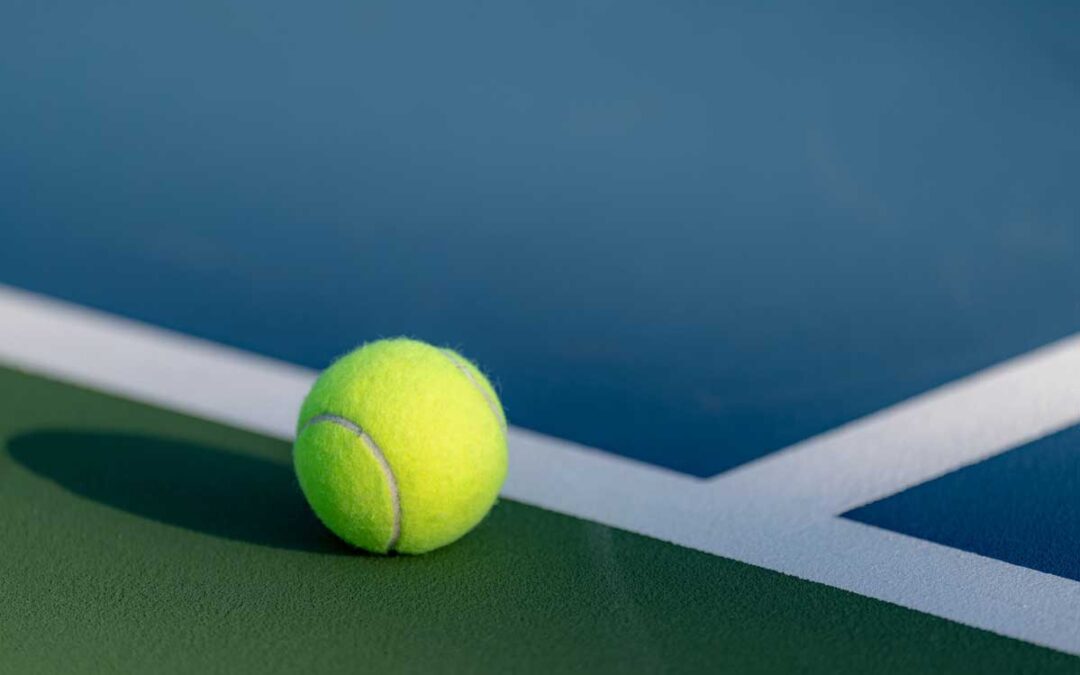Maintaining a tennis court is crucial for ensuring optimal playing conditions and prolonging the life of the surface. One of the most significant aspects of court maintenance is resurfacing. Knowing when to resurface a tennis court can make a huge difference in the quality of play and the overall experience for players. In this blog, we’ll discuss the signs that indicate your court needs resurfacing, the impact of weather and usage, what to expect during the resurfacing process, and why resurfacing can be more cost-effective than constructing a new court.
Signs That Your Court Needs Resurfacing
Over time, all tennis courts experience wear and tear. Here are some common signs that it may be time for resurfacing:
- Cracks: Cracks can develop due to shifting ground, aging materials, or extreme weather conditions. Small cracks can lead to more significant issues if not addressed promptly, as they can expand and create a rough playing surface.
- Fading: If the court surface has lost its vibrant color or the lines are becoming difficult to see, it’s a sign that the surface is deteriorating. Faded surfaces not only look unappealing but can also affect gameplay.
- Uneven Surface: An uneven court can lead to unpredictable bounces, making it challenging to play. If players notice that balls bounce irregularly or if there are noticeable low spots, it’s time to consider resurfacing.
The Impact of Weather and Usage on Court Surfaces
Weather conditions play a significant role in the longevity and performance of tennis courts. Factors such as sun exposure, rain, and temperature fluctuations can all contribute to the degradation of the surface:
- Sun Exposure: UV rays can cause materials to break down, leading to fading and cracking. Courts in sunny areas may require more frequent maintenance.
- Rain and Moisture: Excess moisture can weaken the surface material, causing it to deteriorate faster. Pools of water that collect on the surface can also lead to mold and mildew growth, which can further damage the court.
- Usage: The frequency and intensity of play will also impact the condition of the court. High-traffic courts will show signs of wear more quickly than those used less frequently. It’s essential to assess the usage and determine if resurfacing is necessary to maintain a safe playing environment.
The Resurfacing Process: What to Expect
When it’s determined that resurfacing is needed, understanding the process can help set expectations:
- Inspection: A professional will assess the current condition of the court, identifying cracks, uneven spots, and areas requiring repair.
- Preparation: This stage involves cleaning the court, filling in cracks, and leveling any uneven surfaces. Proper preparation is crucial for achieving a smooth and durable finish.
- Resurfacing: Once prepared, the resurfacing material will be applied. This may involve multiple layers to ensure durability and proper texture for optimal play. The application process may take several hours to complete, depending on the size of the court.
- Curing: After the resurfacing material is applied, it requires time to cure properly. This period can vary but usually lasts a few days, depending on the weather conditions.
- Line Painting: Finally, the court lines are painted, ensuring they are clearly visible for play.
Cost-Effectiveness of Resurfacing vs. Building a New Court
One of the most significant considerations for tennis court owners is the cost. While constructing a new court can be a considerable investment, resurfacing offers a more cost-effective solution:
- Lower Cost: Resurfacing is typically a fraction of the cost of building a new court. It allows you to maintain your existing infrastructure while improving playability.
- Faster Process: Building a new court can take several weeks, while resurfacing can usually be completed in a few days. This means less downtime for players.
- Increased Lifespan: Regular resurfacing can extend the life of your court, delaying the need for a complete rebuild and saving money in the long run.
In conclusion, recognizing the signs that indicate your tennis court needs resurfacing, understanding the impacts of weather and usage, and knowing what to expect during the resurfacing process can help you maintain a high-quality playing surface. Moreover, resurfacing is a cost-effective solution compared to constructing a new court.
If you notice any signs that your court needs attention, don’t hesitate to take action. CALL 800-558-3664 today for your free, no-obligation quote. Our experienced team at Taylor Tennis Courts is here to help you keep your court in top condition!


Recent Comments